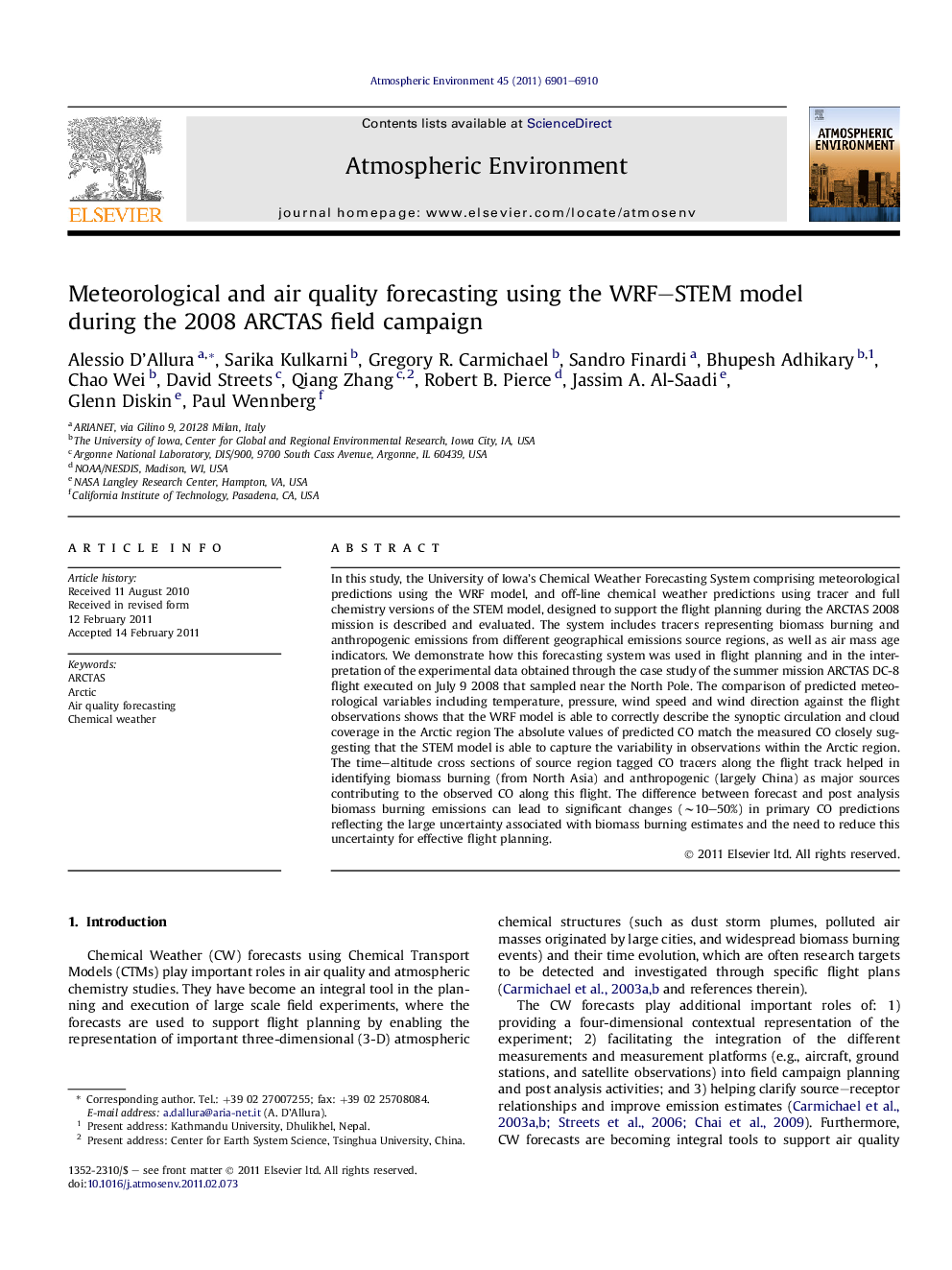| کد مقاله | کد نشریه | سال انتشار | مقاله انگلیسی | نسخه تمام متن |
|---|---|---|---|---|
| 4439490 | 1311022 | 2011 | 10 صفحه PDF | دانلود رایگان |

In this study, the University of Iowa’s Chemical Weather Forecasting System comprising meteorological predictions using the WRF model, and off-line chemical weather predictions using tracer and full chemistry versions of the STEM model, designed to support the flight planning during the ARCTAS 2008 mission is described and evaluated. The system includes tracers representing biomass burning and anthropogenic emissions from different geographical emissions source regions, as well as air mass age indicators. We demonstrate how this forecasting system was used in flight planning and in the interpretation of the experimental data obtained through the case study of the summer mission ARCTAS DC-8 flight executed on July 9 2008 that sampled near the North Pole. The comparison of predicted meteorological variables including temperature, pressure, wind speed and wind direction against the flight observations shows that the WRF model is able to correctly describe the synoptic circulation and cloud coverage in the Arctic region The absolute values of predicted CO match the measured CO closely suggesting that the STEM model is able to capture the variability in observations within the Arctic region. The time–altitude cross sections of source region tagged CO tracers along the flight track helped in identifying biomass burning (from North Asia) and anthropogenic (largely China) as major sources contributing to the observed CO along this flight. The difference between forecast and post analysis biomass burning emissions can lead to significant changes (∼10–50%) in primary CO predictions reflecting the large uncertainty associated with biomass burning estimates and the need to reduce this uncertainty for effective flight planning.
► Demonstrates novel uses of chemical weather forecasts in support of the ARCTAS mission.
► WRF meteorology model is shown to successfully describe Arctic synoptic circulation.
► The North Pole region was impacted by anthropogenic and fire emissions from Asia.
► Further improvements in prediction skills requires improved fire emission estimates.
Journal: Atmospheric Environment - Volume 45, Issue 38, December 2011, Pages 6901–6910